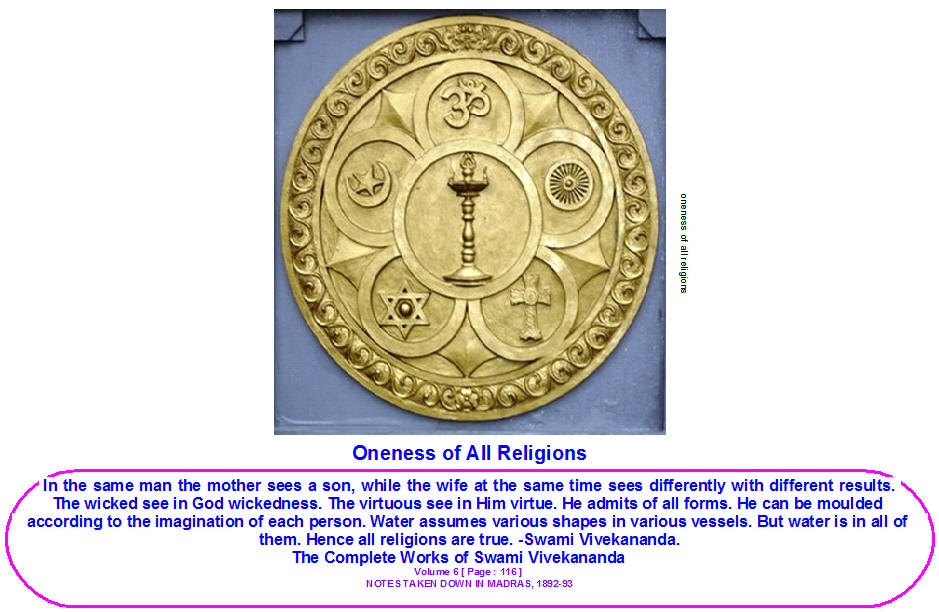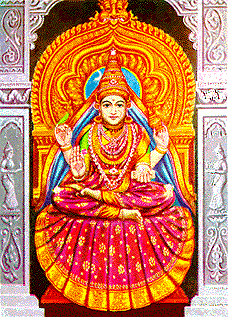
Bhagavadgita Pages, Chapters 1 to 18
BG01 BG02 BG03 BG04 BG05 BG06 BG07 BG08 BG09 BG10 BG11 BG12 BG13 BG14 BG15 BG16 BG17 BG18
V.Krishnaraj

Sringeri is a temple town made famous by Sankaracharya, the Saradhamba temple, Vidyasankara Temple and Sarada Peetham, which found a home on a plateau in the Western Ghats by the Tunga River. Sankaracharya Mutt or monastery in Sringeri since its inception has a continuous succession of Spiritual Gurus. Sringeri is in the southern state of Kannada and the nearest airport is Mangalore International Airport, 110 KM southwest from Sringeri, which is 341 KM northwest from Bangalore and 90 KM from Chikmagalur (southeast of Sringeri).
Sringeri derives its name from Sage Rishyasringa whose father Vibhandaka kept him in the forest to keep him innocent of the ways of the outside world. He did not know man from woman or any man other than his father. The neighboring kingdom of Romapada suffered drought and the ministers suggested that the holy feet of Rishyasringa would bring the much needed rain. Afraid of offending his father Sage Vibhandaka, Romapada sent luscious lasses to the hermitage when the father was absent. The drought-driven damsels showered Rishyasringa with sweets and smiles. Having eaten only the fruits of the forest, he liked the sweets. There was no need for peeling the fruits and getting messy in his hands and mouth. He enjoyed the lingual delights of the titillating cardamom, saffron, edible camphor, rose, pistachio, and other nuts in the sweets. The cascading hair, the enchanting smiles, the sweets, dainty gaits, seesawing callipygian hemispheres and jiggling breasts sent Rishyasringa into a dithering tizzy. He thought the damsels must be sages of a special kind. Before the outbound father discovered their nefarious scheme, the damsels having extended an invitation to Rishyasringa to come to their hermitage faded into the thick jungle. The boy's mind was roiling inside from the divine smell of the flowers in their tresses, their coral lips, their side-long glances, their bow-like thin eyebrows, their wide foreheads, the flickering smile on their petal-soft lips, the honey-sweet words, their delicate chins, the long jeweled necks, the breasts that defied gravity covered by diaphanous veil that kept on slipping, the gems in the sloping valleys between the assertive mammillae, the bend of the backs from the sheer weight of the breasts, the gentle swirl of the navels, the fragile tendrillar jeweled waists, the swaying hips, the lotus hands, and the tight, smooth and soft thighs like that of the trunk of stripped plantain tree.
The thought of the damsels left an indelible impression on his psyche and vernal longings so much so he mustered strength to venture a trip to the hermitage without the knowledge of his father. Romapada's spies gave the king an advance warning on the imminent visit of the boy-sage into his kingdom. No sooner than he stepped into the kingdom, the turgid nimbus clouds poured down in a torrent. The grateful king immediately offered the hand of his daughter in marriage to the boy-sage, who accepted the offer and lived in the palace in luxury for some time.
Dasaratha, the king of Ayodhya, having heard the exploits of the wonder boy-sage invited him to his capital to perform the sacrifice of Putrakameshti, by which Dasaratha was blessed with four sons. Sage had thus became the bringer of rain, and progeny to the erstwhile barren king. Rishyasringa was happy with himself, his married life and his ability to bring into this world Sri Rama, the embodiment of Dharma. End of the story of the boy-sage Rishyasringa whose name became entwined with the monastery in Sringeri.
The Sarada Temple of Sringeri
Sankaracharya carved Yantra on a rock in the middle of Tunga River and installed a sandal-wood image with a thatched roof. Over the course of time a permanent structure was built with sanctum sanctorum, a pradakshina-- a walkway for circumambulation, a huge hall, a stone gopura (tower) and the image of Sarada with a radiant face. The temple has the throne used for the ceremonial induction of a new Acharya. The Goddess is Guru Rupini and dispenses Grace through the Acharyas. The Goddess is the Saguna (Manifest) form of the Absolute Supreme holding in her hands the Nectar of Immortality, a book of Supreme Knowledge, a rosary of beads representing Aksharas from which the whole Universe of beings and matter proceeds and chinmudra pose which indicates the oneness of Jiva and Brahman. She is Brahmavidya and the repository of spiritual knowledge. The Goddess sits on Yantra as depicted below.


Sarada lays emphasis on Chit (Consciousness) aspect, while Rajarajesvari emphasizes the Ananda (Bliss) aspect. She is the Supreme Goddess though she transcends gender and the Trimurthis (Brahma, Vishnu and Siva) and their respective Saktis, Sarasvati, Lakshmi and Isvari. She alone is the sole reigning Goddess in the temple, goes by the name Sarada Paramesvari and enjoys worship by her devotees with the chanting of Lalita Sahasranamam. Since she is Sakti and Saktiman, there is no Linga in the temple. Sankara built four guardian temples on the surrounding hillocks to protect the villages and ward off dangers, diseases and forces of evil. Kala Bhiarava abides in the eastern hillock, Anjaneya in the west, Durga in the south, and Kali in the north. Worship is still in vogue in these temples.
Sri Vidya Sankara Temple.
This temple catches the eyes of all visitors. It is a museum unto itself. The grandeur, the architecture, the stone carvings and the wonder are appealing to the mind and spirit.
There is a temple of Sri Sankaracharya within the monastery compound. The previous Acharyas were buried here in the compound.
Here are the photos that I took of the Sarada temple and the Vidyasankara temple in 2005. The visit was once in a lifetime experience and a spiritual and visual delight.
Official photo of the Sarada Temple


